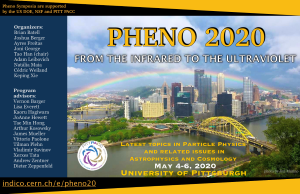Speaker
Description
The decay $K^+ \rightarrow \pi^+ \nu \bar{\nu}$, with a very precisely predicted branching ratio of less than $10^{-10}$,is one of the best candidates to reveal indirect effects of new physics at the highest mass scales.The NA62 experiment at the CERN SPS is designed to measure the branching ratio of the $K^+ \rightarrow \pi^+ \nu \bar{\nu}$ with a decay-in-flight technique. NA62 took data so far in 2016-2018. Statistics collected in 2016 allowed NA62 to reach the Standard Model sensitivity for $K^+ \rightarrow \pi^+ \nu \bar{\nu}$, entering the domain of $10^{-10}$ single event sensitivity and showing the proof of principle of the experiment. Thanks to the statistics collected in 2017, NA62 surpasses the present best sensitivity. The analysis strategy is reviewed and the preliminary result from the 2017 data set is presented.
The NA62 hermetic photon-veto system, needed to reject the $K^+ \rightarrow \pi^+ \pi^0$ background in the $K^+ \rightarrow \pi^+ \nu \bar{\nu}$ analysis, allows for a high-sensitivity search for $\pi^0$, or a new particle with mass around the $\pi^0$ one, decaying to invisible particles. A preliminary result on this search, obtained with the 2017 data sample, is presented. The signature with only a charged pion in the final state is exploited also to search for a new feebly interacting particle $X$ in the decay $K^+ \rightarrow \pi^+ X$, with $X$ not decaying to $SM$ particles within the experimental apparatus. A preliminary result is presented on the reinterpretation of the $K^+ \rightarrow \pi^+ \nu \bar{\nu}$ analysis in a bump hunting in the variable $m_{miss}^{2} = ({\bf p}_{K^{+}}-{\bf p}_{\pi^{+}})^2$ corresponding to searching for a new particle with mass in $\sim [0,100]$ MeV$/c^2$ or $\sim[160,260]$ MeV$/c^2$.
